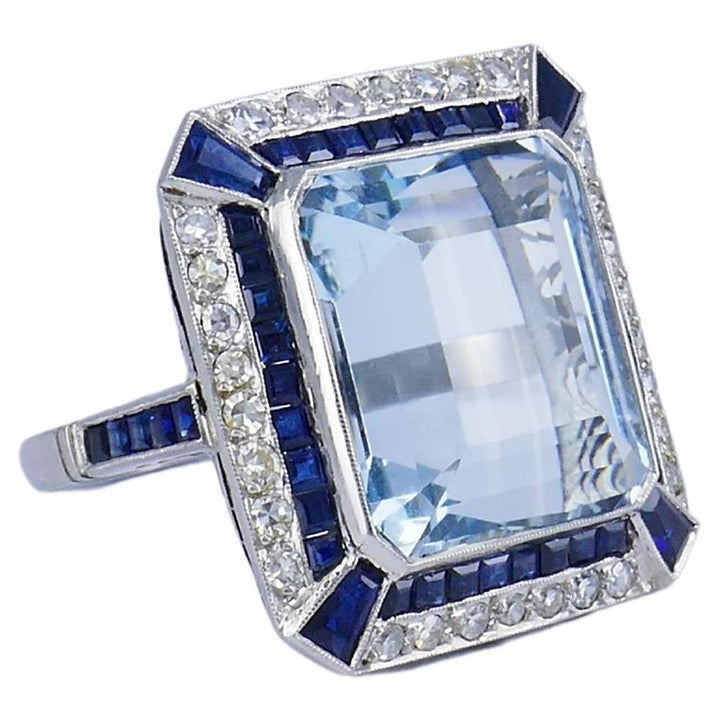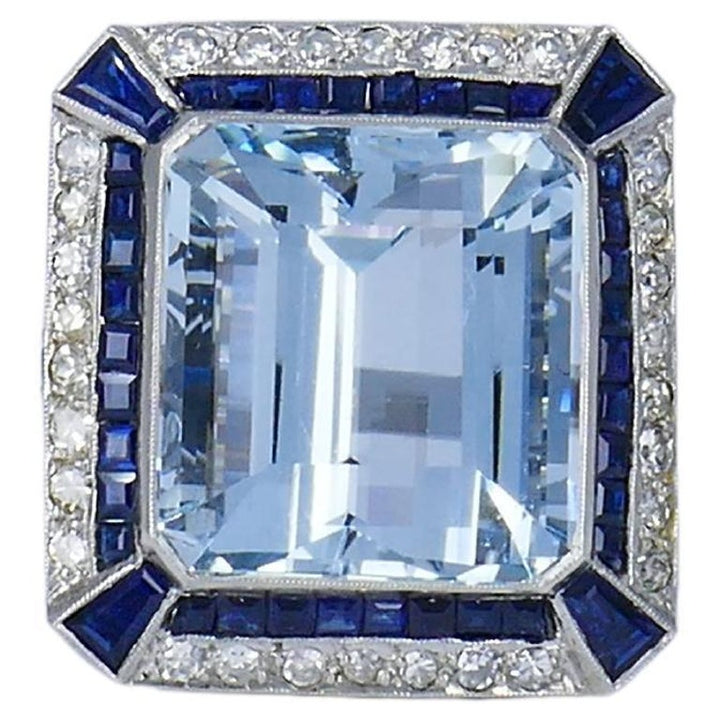70682-NOOO
Aquamarine's popularity isn’t limited to any specific era or fashion trend. It has been appreciated for centuries and continues to be in vogue.
An Aquamarine is a precious gemstone from the Beryl family. The name came from a combination of two Latin words. “Aqua” means water, “marina” means sea. Together they named a gemstone with the color of the sea water.
Aquamarine color varies from greenish blue to blue. The stone receives this color from ferrous iron. The range of the hue goes from very light to moderately dark. Therefore, aqua rarely can be darker than Swiss blue topaz.
Aquamarine is a relatively hard gemstone, scoring 7.5 to 8 on the Mohs scale of mineral hardness. This means it is durable and can withstand everyday wear and tear.
Aquamarine prices depend on depth and purity of color and clarity. Well-pronounced blue to slightly greenish blue with no visible inclusions are usually the best choice. Although, a high-quality cut, which you can recognize when the stone is dazzling, emphasizes the color and clarity.
When choosing setting for your aquamarine ring, keep in mind that low crown will provide higher brilliance. However, to deepen the color choose higher crowns. Aquamarine usually pairs with white gold and platinum. This combination creates an airy, summery feel.
Vintage filigree jewelry is a testament to the skill and artistry of the jewelers. Creating intricate filigree designs by hand is a highly specialized craft that requires precision, patience, and attention to detail.
Filigree jewelry has a timeless and classic beauty that transcends fashion trends. The delicate and intricate designs often feature floral motifs, geometric patterns, or lace-like structures that remain appealing and relevant across generations.
Filigree jewelry is a delicate and intricate style of jewelry. A filigree piece making involves the use of fine wires made of precious metals.
Here are the basics steps of creating a filigree piece:
1) The maker first prepares the fine metal wire which may be round, square, or rectangular in cross-section. It's usually very thin, often in gauges ranging from 26 to 30 (the higher the number, the thinner the wire).
2) The designer sketches or plans the design for the filigree piece since the designs can be highly intricate. Usually they feature loops, curls, and other decorative elements.
3) Once the wire components are shaped and positioned according to the design, they are soldered together. This step helps secure the wires in place and create a stable structure.
4) After soldering, the piece is thoroughly cleaned and polished to achieve a smooth and shiny surface. This step enhances the appearance of the filigree work.
Filigree jewelry techniques have been employed in various cultures throughout history. That resulted in different regional styles and variations, each with its unique artistic and cultural significance.
Adult signature required upon receipt
Pick up in store available.
9454 Wilshire Blvd, Suite M-20,
Beverly Hills CA 90212
(310) 860-9991
Tues – Fri 11:30am – 5:30pm
Sat 10:30am – 4:30pm
Closed Sundays & Mondays
We accept returns within 3 business days of receipt, providing that the item is still in its original packaging and is free from damage.









